Here is the Volume 7 of Curling from When you watch something, visit us first! Ms. Mika MATSUZAWA, who represented Japan in Curling at the 19th Olympic Winter Games in Salt Lake City, USA, 2002, told us about the meaning of the location of stones in Curling this time. This is the combined version of Part 7-1 through 7-4 on our YouTube channel.
In Vol.6, we learned about the variation of shots of Curling.
This time, Ms. Mika MATSUZAWA, who represented Japan in Curling at the 19th Olympic Winter Games held in Salt Lake City, USA, in 2002, told us about the meaning of the location of stones of Curling.
I think you will understand how Curlers (Curling players) think about competing.
.png)
Part 7-1: Implication of the location of Guard stones
First, about the location of Guard stones. Placing Center Guard stones is a tactic used by the team without the last stone, and when stones accumulate around the Center line, both teams jostle behind this Center Guard stones so they can make House narrow.
So, as a team without the last stone, they aim to narrow House and make the opponent score only 1 point by battling behind the Center Guard stones. Narrow House to avoid giving the opponent multiple points. This is the implication of Center Guard stone by a team without last stone.
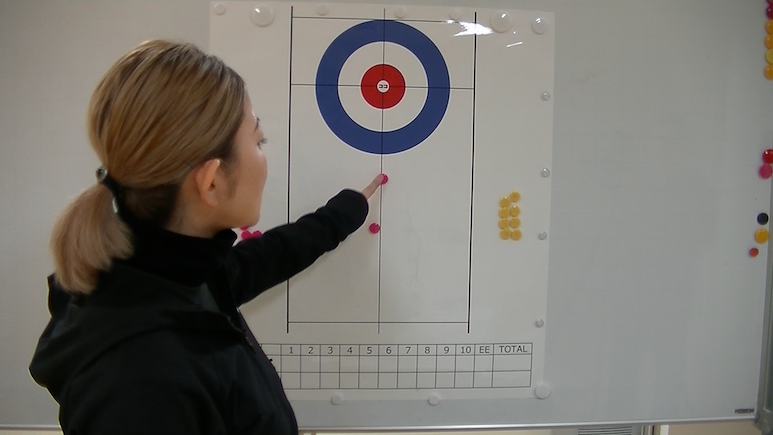
Conversely, a team with the last stone will try to keep the center open by battling on both sides while leaving the center of House clean, so that even if various jostles occur on the sides, they can keep even 1 point at the last of the End. Another implication is that House can be used more widely, making it easier to create a situation in which 2 or 3 points can be scored. Teams with the last stone want to use House widely by using the sides.

Where they place the Guard stones is also important depending on the curl of the ice, so if you see where they want to place the Center Guard stone on the 1st delivery of Lead, you can see how much this ice is curling by watching a Curling game on TV.
When 2 Guard stones are close together, when the opponent tries to take 2 stones out at the same time, the point to be hit by the thrown stone becomes easy. If they hit the thrown stone against the Guard stone so that 2 Guard stones can be taken out, this Yellow stone will also go out.
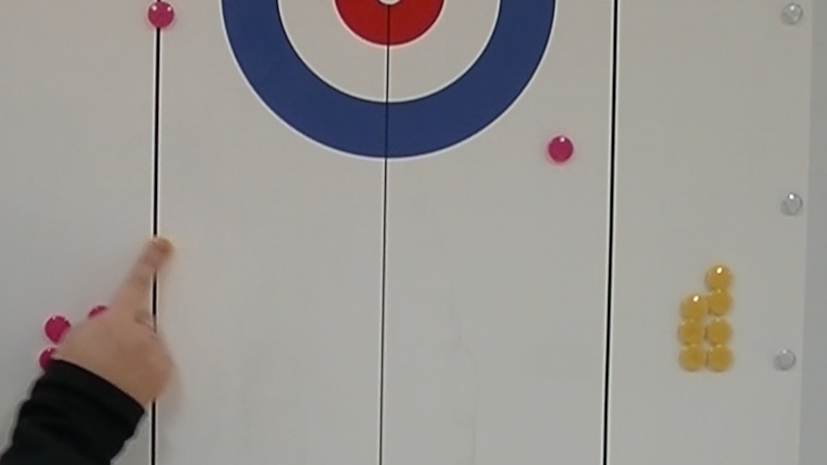
However, if the Guard stones are apart, the thrown stone must not hit diagonally. If the thrown stone hits the stone at the same angle as before, only 1 Guard stone will be taken out, so it must hit this Guard stone at near the center of it. If so, 2 Guard stones are taken out, but there is a possibility that the stones thrown will remain on the ice.
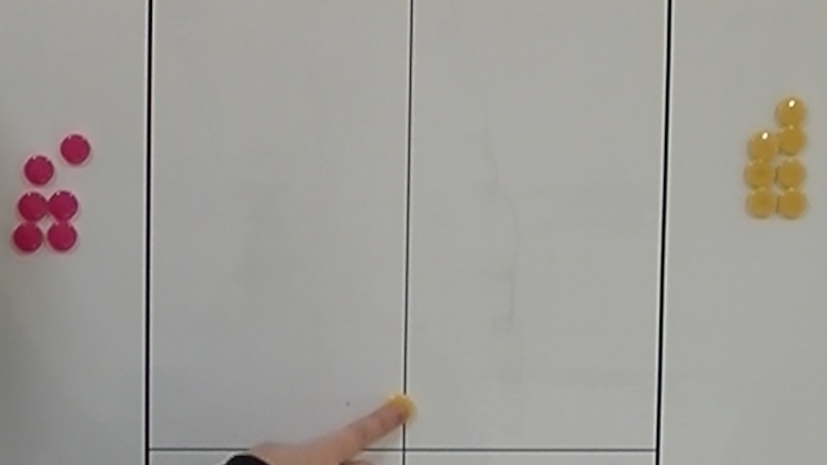
So that is one of the reasons why they keep Double Center Guard stones apart. Even if 2 Guard stones are taken out at once, they are aiming for the possibility that 1 Guard stone will remain. So they want to keep Double Center Guard stones apart.
If Double Center Guard stones are close, the situation is terrible. Both Guard stones are taken out at once, and the thrown stone also goes out. The team that absolutely wants to Steal should keep Double Center Guard stones apart, because there are no stones to guard.
Thus, depending on the distance between Guard stones and whether they want to have the thrown stone remain on the ice or not, the point where they want to hit the Guard stone.
Part 7-2: Stones in House
Now, let me talk about the position of the stones in House. First, about the case there is no Guard stones. If there is no Guard stone, the proper Draw in Curling is to place it in front of “Tee line,” the line in the center of House.
The reason is that if Draw shot goes further beyond Tee line, that can become a stone used by the opponent like this, so it is very important to place it in front of Tee line as the basis of Draw shots.
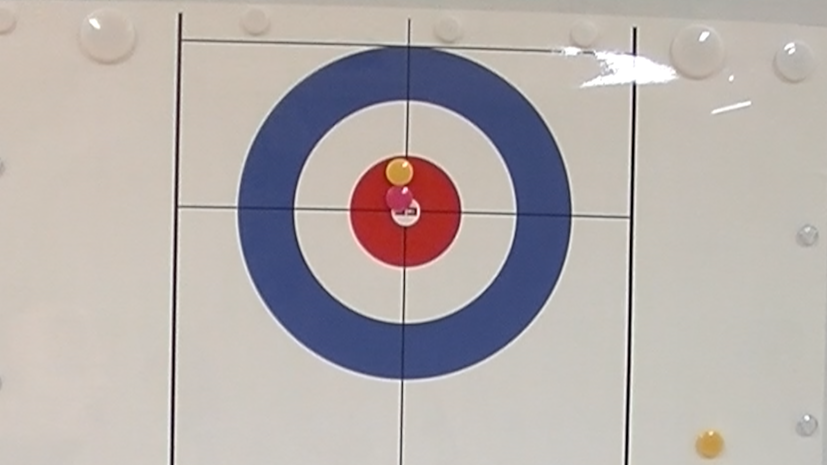
This is also applied when there are corner Guard stones. To place the stone in front of Tee line. This is very important. However, depending on where Draw shot stops, the opponent stone may become No. 1 even though it is in front of Tee line, and that stone may be used as a back Guard, so the position of the stone is important when there is a corner Guard stone.
For example, when the position is like this, depending on the distance between the center of House and each stone, if the stones attach each other like this, this Yellow stone will be No.1, but this Yellow stone probably may be seen. When they try to attach that stone angularly, players need to look thoroughly at how much angle the opponent needs to put the stone so that they will have the No. 1 stone, therefore, the position of the stone is actually very important.
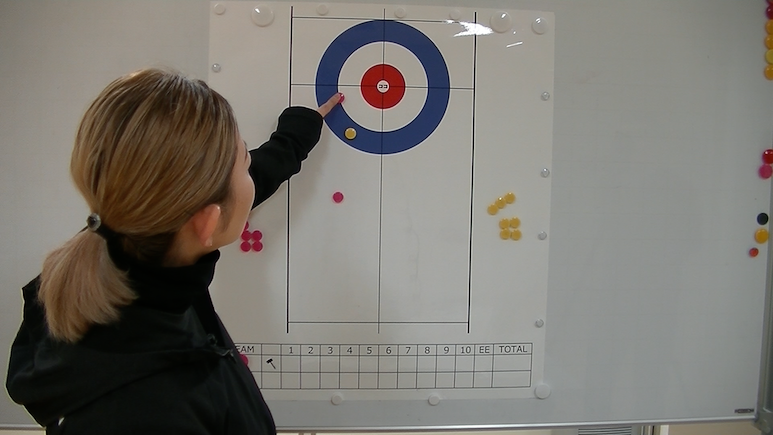
If Draw shot goes to beyond Tee line like this, the opponent will obviously have a good position, so it is actually important to be able to place the stone in front of Tee line, and even if it is in front of the line, where they can place it.
This is also applied when there is a center Guard, but in the case of this, if a team places their stone beyond Tee line, the opponent will try to put their stone on it like this. In such position. So, they also try to put their stone on the opponent’s stone like this, so players actually think about how many stones they need to reach to the center of House.
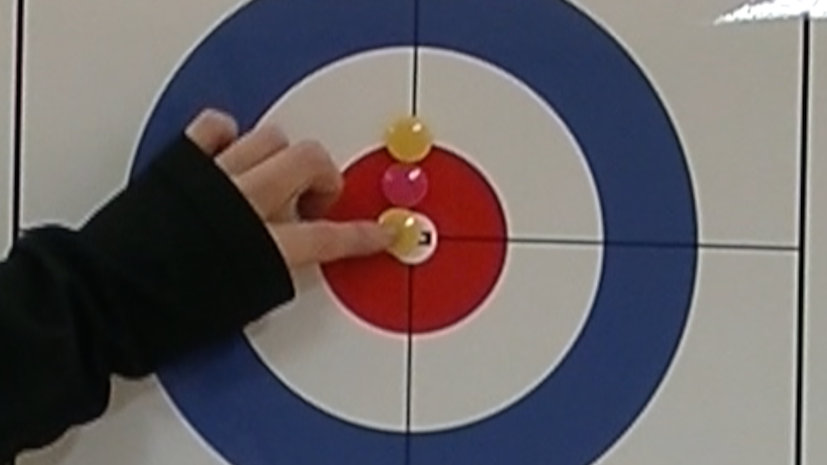
In this situation, this Yellow stone is No.1, so it is desirable to have a Yellow stone here. However, if this Yellow stone is one stone behind, then Red stone would be No.1, as shown here, so players are actually looking at where is the best place for Draw shot to go, even if it goes beyond Tee line.
For example, a stone in House is in front of Tee line and there is one center Guard stone. Then, for example, Yellow hits this Red stone. It hits this Red stone and rolls. The Yellow stone is still in front of Tee line even after the roll.
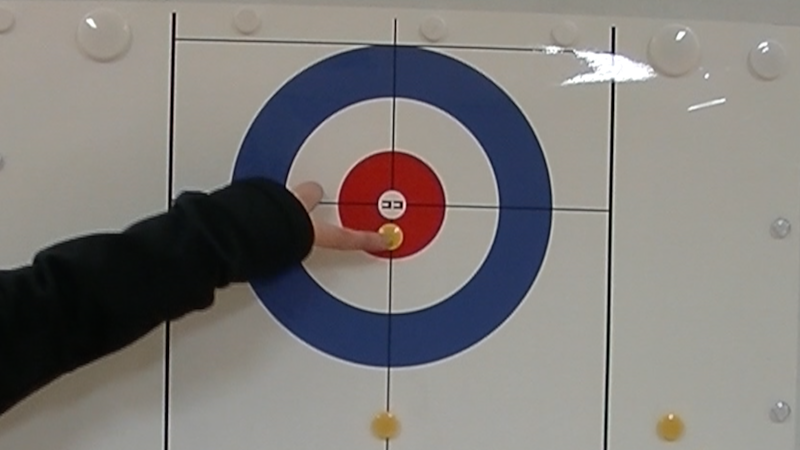
In this situation, I think Yellow could have made a very good Hit and Roll shot, but then, let’s say the opponent’s stone is on Tee line, for example. If Yellow makes Hit and Roll a stone on Tee line, the thrown stone will always come behind the line after the roll. When this happens, this stone will be used by the opponent.
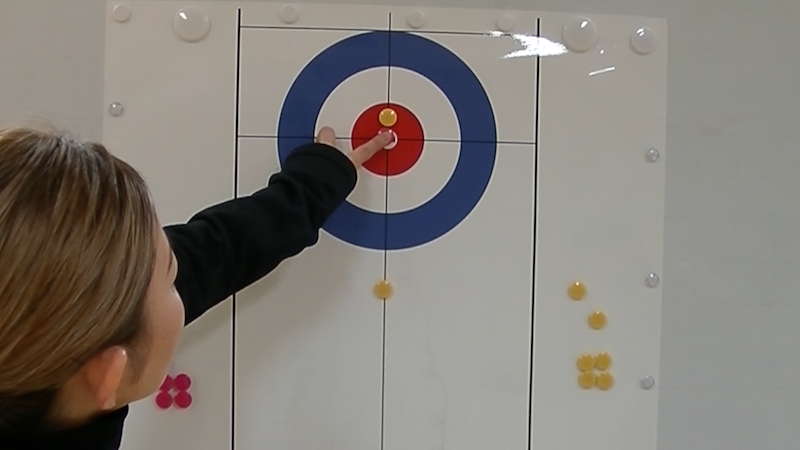
So players consider when the opponent comes to Hit and Roll shot, where the opponent’s stone would come to, and think about how far their own stone should advance even though it is a simple Draw shot to a side. They think if the opponent makes Hit and Roll, their stone is not that much of a threat. And it’s quite far away from the center of House and much further back, so it is no problem. If a stone is about to stopping at the improper point, it is sometimes better to make it advance to the further back.
For example, if one Red stone in the house is beyond Tee line, Yellow can actually use the opponent’s stone to their advantage if they can make a good Freeze shot, because the Red stone is protecting the Yellow stone while Yellow reducing the possibility of the opponent scoring, if there is a corner Guard and the stone is beyond Tee line.
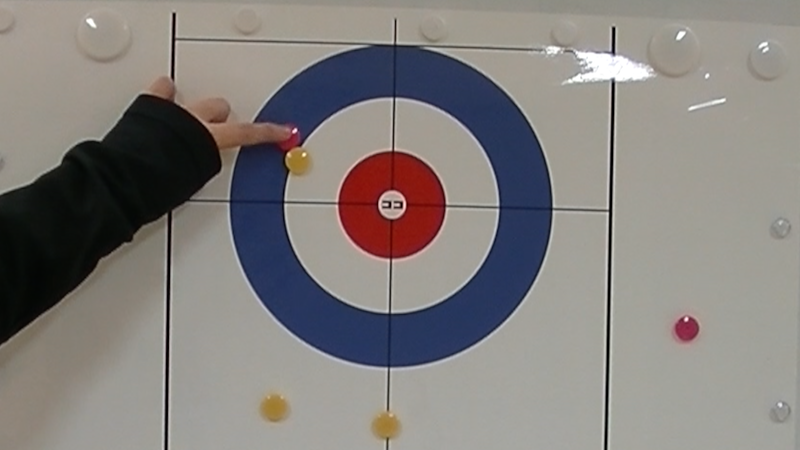
For example, a stone that is slightly out of House like this can also be used in this way. So if such stone is left here improperly, players may want to move it farther away, and stones left behind may not be connected to scoring any points, but they can be used as Back Guard stones.
Part 7-3: Meaning of the location of 2 stones
Stones located vertically
Now let’s see the action of the stone hit. The stones are attached vertically each other like this. Of course, if the thrown stone hits the center of this stone, this stone will remain in place and only this stone will go out, however, if the thrown stone hits even slightly off the center of this stone, this stone will go right sideways.

If, for example, these 2 stones are placed slightly apart, the action after being hit will be different. If these stones are apart from each other, this will go out at an angle. If 2 stones are attached to each other, this stone may go right sideways like this, so it is important for the players to see whether the stones are apart from each other or attached to each other. It is also important to see whether the stones are attached vertically or diagonally. When stones are attached to each other diagonally, the direction in which they are hit is important.
Of course, if the thrown stone hits here, this stone will go out, but this stone will stay where it is. When the thrown stone hits vertically, both stones go out like this. Like this.

The angle of the stones is important. It is interesting to see the angle of the stones, and if the thrown stone hits in some way, both stones will go out; if the thrown stone hits in another way, 1 stone will remain.
Stones located parallel or diagonally
When there are 2 stones parallel to each other like this, it is very difficult to take both of them at the same time, Double Takeout. This is because the hitting stone will definitely go in the direction 90 degrees from the direction it hits. Therefore, in such a non-parallel location of stones, depending on where the thrown stone hits, there is a possibility that the thrown stone will go toward the second stone.
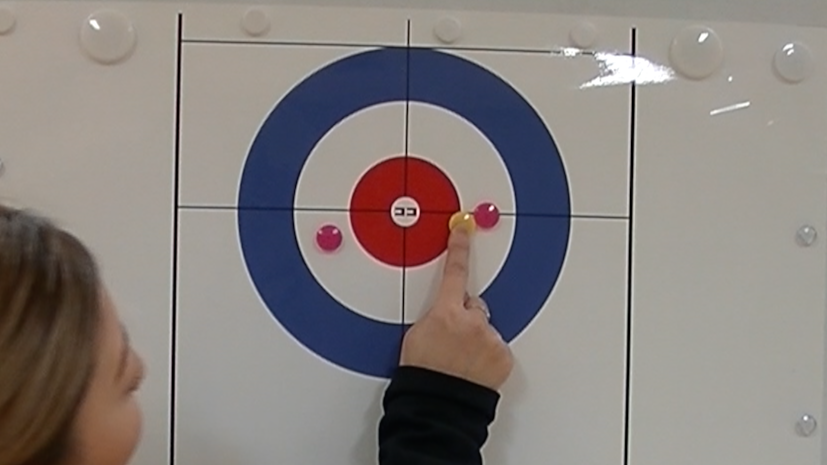
However, since the stone must be hit precisely around the center of the opponent’s stone, the movement of the stone after hitting it, i.e., the speed toward the second stone, is less, and there are cases where the second stone cannot be taken out, for example. Thus, if the stones are placed angled slightly, Double Takeout may be possible. So, a team trying to score 2 points would place their 2 stones parallel to each other like this.
On the other hand, it is also effective to place 2 stones in a large angle, for example. This Double Takeout is difficult because the thrown stone must hit very slightly the opponent’s stone. To take out the opponent’s 2 angled stones is very difficult.
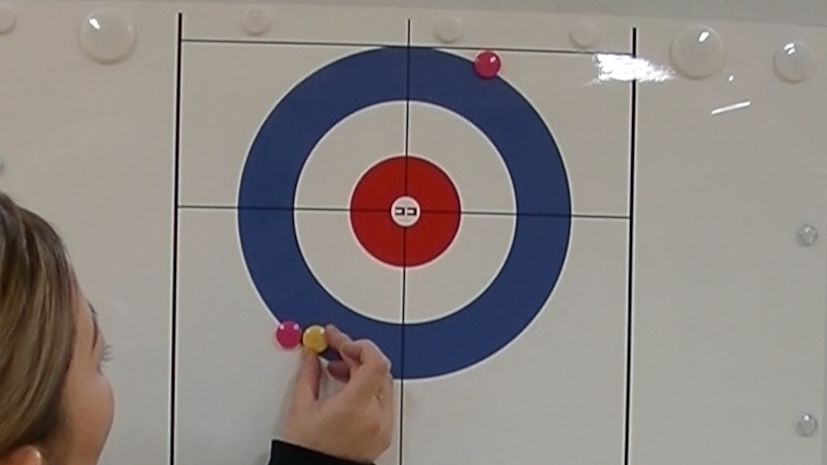
In this situation, to Double Takeout the opponent’s 2 stones at once, the thrown stone must hit here. Like this. Then, in fact, this thrown stone will also go out. Thus, depending on what a team wants to make the opponent do, they may place their stones in a unpleasant and obnoxious position like this.
Even if a team is simply aiming for 2 points, then where they place their stones is important. If the first stone is beyond Tee line, then of course they want to have the 2 stones parallel in the position behind Tee line. If the first stone is at the edge of House, then they want to place their 2 stones parallel, more apart as possible.
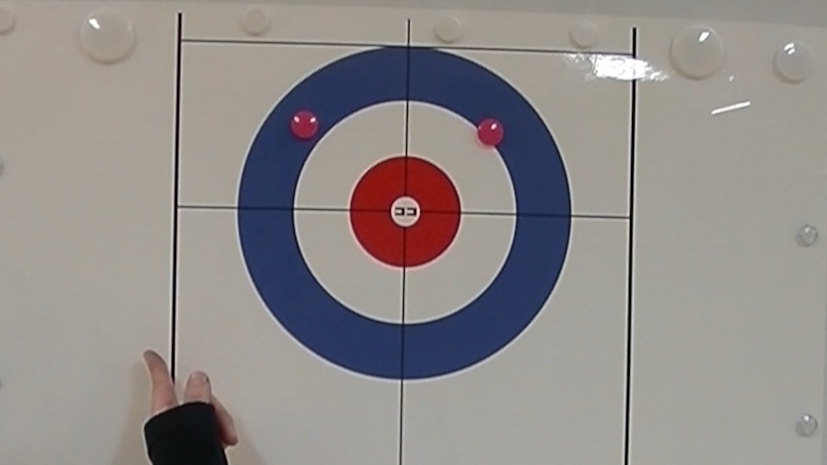
Or, if they place the second stone in this place like this, it would be difficult for the opponent to take both stones out at the same time. To make Double Takeout in this situation, the thrown stone must hit the opponent’s stone very slightly.
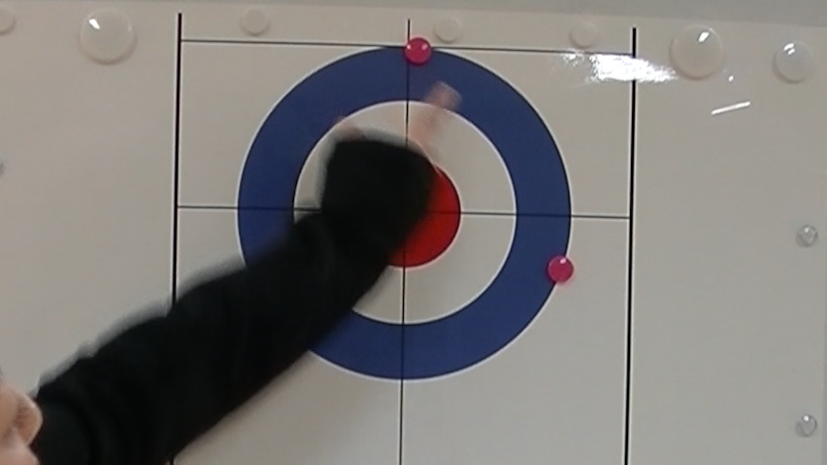
It would be interesting to see where to place stones to get 2 points like this.
Part 7-4: Stones attached each other
Stones strung together at the center of House
For example, there may be a Guard stone like this, and stones may be strung in this way. In this case, if the thrown stone hits here, only Red stones will go out. If the thrown stone hits this stone, this stone will be like this and this stone will be like this, so only Red stones will go out.
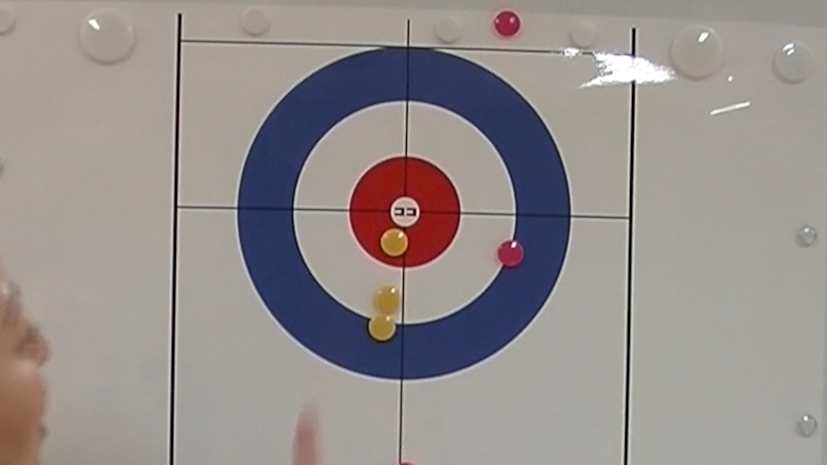
The angle at which the stones are attached to each other is the key point. Players must think the angle of stones. Therefore, players often attach stones at an angle like this rather than right in front of another. When the stones are located like this, this Yellow stone will never be taken out even if it is hit this way. In this situation, the thrown stone cannot hit this stone from right side. This Yellow stone can only be seen from left side. Therefore, players think to place the stone on the inside a little. In this form, if the thrown stone hits here, only Yellow stones will go out.
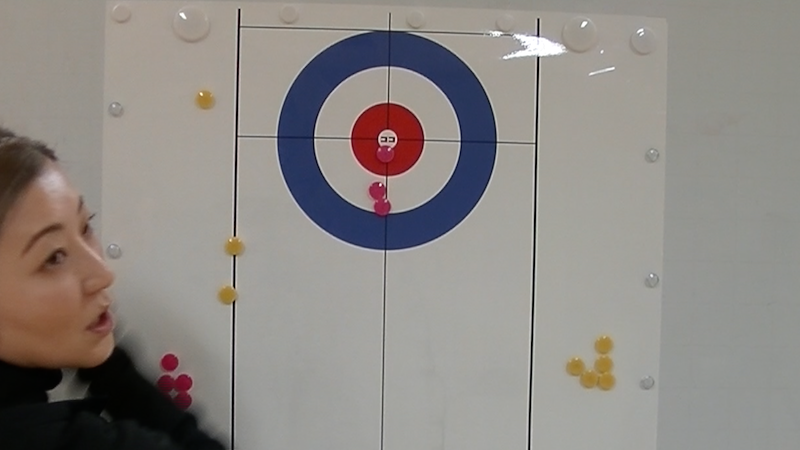
The players attach their stones to the opponent’s stones at an angle, thinking that it would be nice if the final shape of the stones was like that. If the stones are placed at a good angle to each other, for example, Red team will be in a position where only Red stones will go out if the thrown stone hits here, so it is common to place stones while carefully watching such angles.
So, until Skip delivers their stone, the stones hit each other, and they may find that the stones are placed at an angle where only Red stones will go out. If this happens, they can score a lot of points with the last delivery. Such situation happens sometimes, therefore, if the stones is located like that, for example, only Red stones go out if the thrown stone hits here, Red team will place their stone here to protect. No matter how the thrown stone hits this stone, it will not hit the critical point.
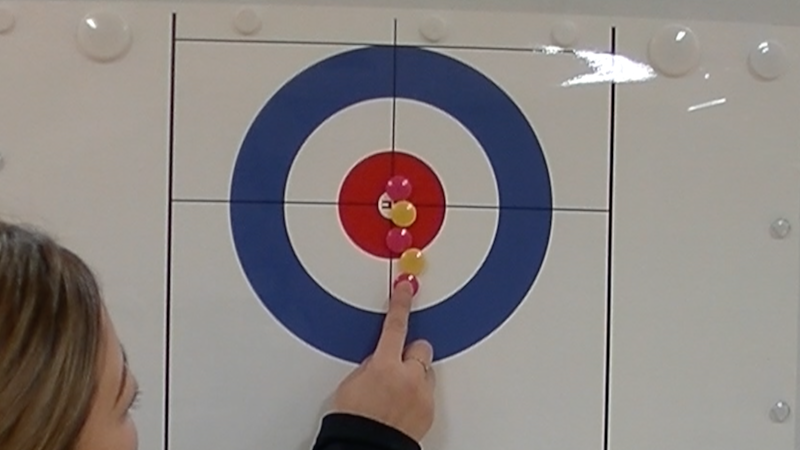
They may place a stone in front of another one so that it will be at a different angle from the point to be hit. If they place a Guard stone, the opponent may let this Guard stone go to that point, so it is better to place another stone so that the thrown stone will not hit at that point than to place a Guard stone. Such a tactic may be used.
“Pocket”
Stones are behind Tee line. Suppose the opponent’s stones are like this. For example, Yellow team throws their stone here like this. If this happens, in fact, Red team cannot take this stone out with 1 delivery. Red team must never make this form of stones, since when Yellow stone will be hit from either direction, it will still hit one of Red stones.
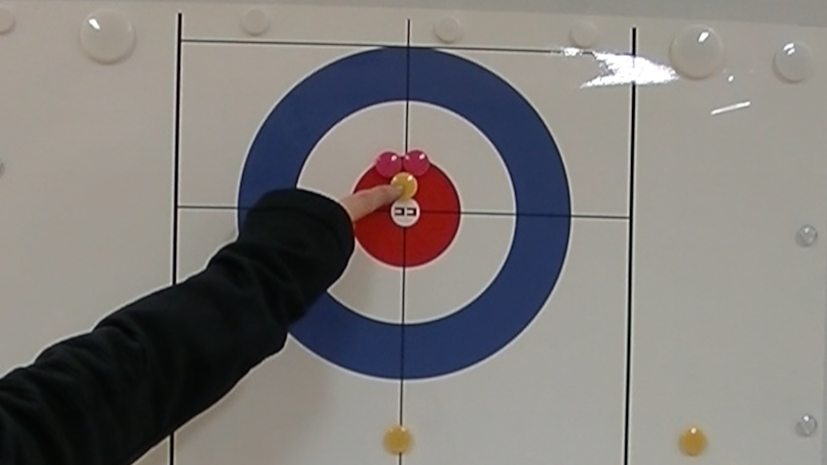
For example, if the stones are at an angle to each other even at a slight angle, or if they are separated by a small distance, there is a possibility that the stones will move and it is not fatal. It is better not to create such a situation, which is called “Pocket.”
Even in this situation, if the stones are even slightly separated from each other like this, these stones will all go out if they are hit. So this Freeze shot is a big chance, but if the thrown stone pushes the opponent’s stone even a little bit, it will be taken out, therefore, Freeze shot is very difficult.
Share this content:
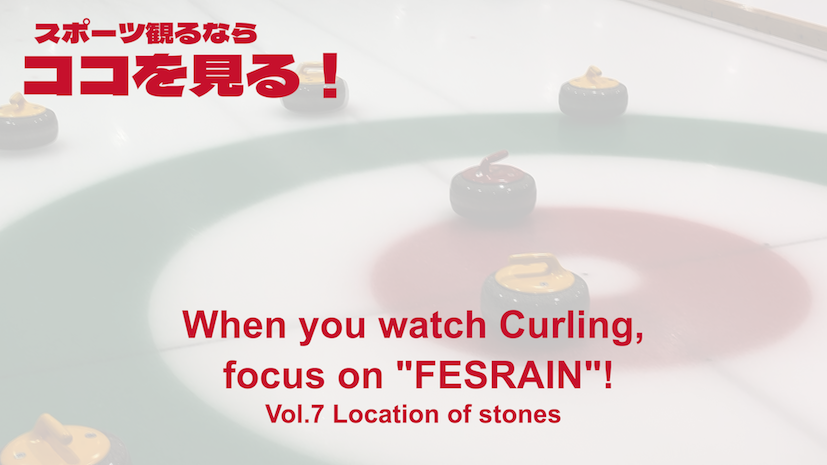
コメントを残す